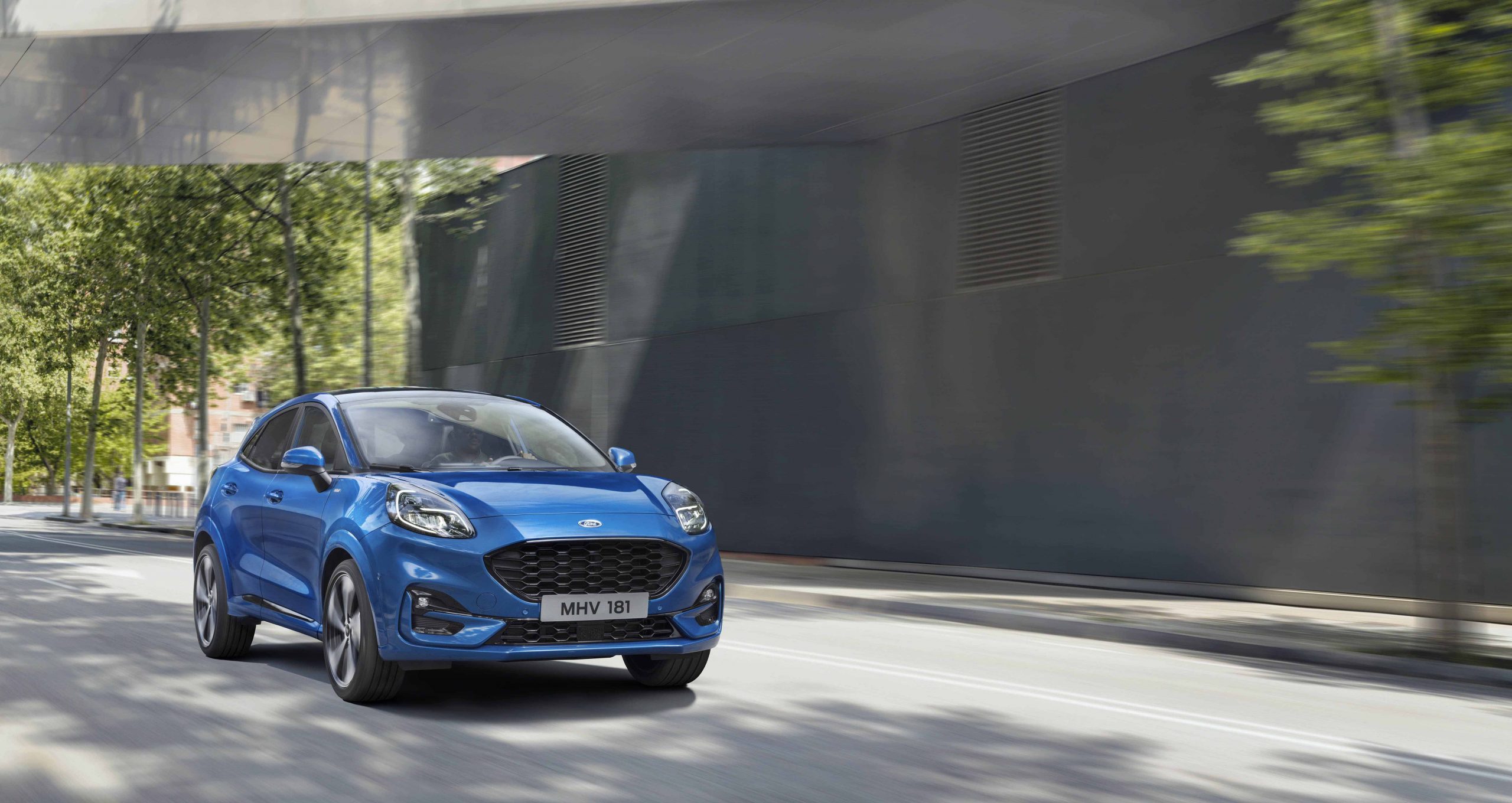
Puma details unveiled by Ford
Ford has begun 2020 in style with details of the brand new Ford Puma – a crossover based on the Fiesta.
Billed as a new chapter in Ford’s design identity the Puma features Ford’s advanced, fuel saving mild-hybrid powertrain technology alongside class-leading practicality and head-turning design for compact crossover customers.

Powerful, responsive performance and optimised fuel efficiency is delivered using Ford’s EcoBoost Hybrid 48-volt technology – seamlessly integrating electric torque assistance with a low-friction, three-cylinder 1.0‑litre EcoBoost petrol engine to deliver up to 155 PS.
Its SUV-inspired proportions deliver a raised ride-height for a confidence-enhancing driving experience, and support class-leading uncompromised luggage capacity of 456 litres.
Advanced driver assistance technologies delivering a simpler and less stressful driving experience include:
- Adaptive Cruise Control with Stop & Go, Speed Sign Recognition and Lane Centring, for effortlessly negotiating highway and stop-start traffic
- New Local Hazard Information, which can inform the driver of hazardous situations in the road ahead before they become visible to the driver or vehicle sensors
Puma is also the first vehicle in its segment to offer hands-free tailgate technology and lumbar massage seats for comfort and convenience – both delivered as standard in premium Titanium X specification. The Ford Performance-inspired Puma ST-Line is offered with signature sports body styling including 19-inch optional matt black machined alloy wheels, sports suspension and a flat-bottomed steering wheel. A new Puma ST-Line X Vignale variant further enhances comfort with standard Windsor leather seats and premium B&O Sound System.
“Our customers told us they want a compact vehicle with stand-out looks that also delivers solutions for everyday living. The result is our new Ford Puma – charismatic, practical and offering technologies from massage seats to mild-hybrid powertrains,” said Stuart Rowley, president, Ford of Europe.
Advanced powertrain technology
Last year Ford announced that every one of the company’s nameplates launched from the all-new Focus onwards will include an electrified option. Puma is one of 14 electrified vehicles to be introduced by Ford by the end of this year.
Puma customers will be among the first to benefit from Ford’s mild-hybrid architecture – tailored to enhance fuel efficiency while complementing Ford’s fun to drive experience with more powerful and responsive performance.
EcoBoost Hybrid technology enhances Puma’s 1.0-litre EcoBoost petrol engine with an 11.5 kW belt-driven integrated starter/generator (BISG). Replacing the standard alternator, the BISG enables recovery and storage of energy usually lost during braking and coasting to charge a 48‑volt lithium-ion air-cooled battery pack.
Offered in 125 PS and 155 PS variants, the intelligent, self-regulating mild-hybrid system continuously monitors how the vehicle is being used to determine when and how intensively to charge the battery for optimal benefit, and when to use the stored battery charge.
In addition, customers can choose from advanced range of Ford EcoBoost petrol and Ford EcoBlue diesel engines that are supported by standard Auto Start-Stop for further reduced running costs, and a slick-shifting six-speed manual transmission.
A 125 PS 1.0-litre EcoBoost engine delivers from 131 g/km CO2 emissions and 5.7 l/100 km fuel efficiency WLTP (from 103 g/km and 4.5 l/100 km NEDC)1 and later this year will be available with a new seven-speed automatic dual-clutch transmission that offers seamless gear changes for optimised refinement and fuel efficiency.2
Puma’s 1.0-litre EcoBoost and EcoBoost Hybrid powertrains also feature Ford’s industry-first cylinder deactivation system for a three-cylinder engine, which automatically switches off one the engine’s cylinders when full capacity is not needed, such as when coasting or cruising. The system can disengage or re-engage one cylinder in 14 milliseconds.
A 120 PS 1.5-litre EcoBlue diesel engine option will also be introduced later this year, delivering refined power and torque delivery alongside targeted CO2 emissions from 117 g/km and targeted fuel efficiency from 4.5 l/100 km WLTP (from 99 g/km and 3.8 l/100 km NEDC).

